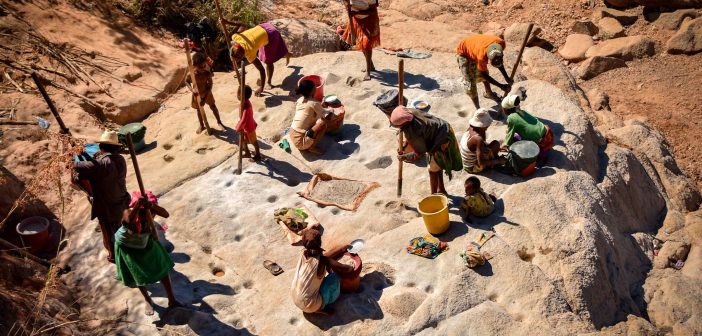Some of the most notable African conflicts in past decades have been driven by the race to obtain resources, especially diamonds. Profits from the diamond trade are often inequitably distributed between those in power and the miners. These power tensions among lucrative diamond mines played a significant role in the outbreak of the Sierra Leone Civil War, according to the Enough Project. Such tragic consequences to power conflicts in the diamond industry have been prevalent in media in recent years through films like “Blood Diamond” starring Leonardo DiCaprio and have stimulated initiatives like the Kimberley Process to discourage the mining of “conflict” or “blood” diamonds. Ultimately, this violence not only undermines political stability and economic growth, but it also hinders progress on Sustainable Development Goals (SDGs), such as eliminating poverty.
The Kimberley Process
Implemented in 2003, the Kimberley Process seeks to reduce diamond-related violence and increase revenues for exporting governments through a “chain of custody” certification process. Diamonds are verified and tracked at every stage—from the mine to the in-store buyer— via exhaustive documentation. It is difficult to forge such documents because they are often made in a country’s mint, allowing governments and companies to quickly determine whether a diamond is a “conflict diamond.”
So far, 81 countries have signed onto the Kimberley Process, known as Kimberley countries. They represent more than 99% of the countries where diamonds are mined, bought and sold throughout the world. Extensive statistical data and collaboration between these countries enforce the Kimberley Process, exposing countries that are involved with exploitative diamond mining activities. Violations can result in sanctions from the United Nations and other Kimberley countries. Moreover, the initiative provides an incredibly strong incentive for exporters to comply with its regulations as many diamond exporters are dependent on revenue from the mineral.
Fighting Poverty and the Effects of COVID-19
Because diamond miners receive a maximum daily wage of $1 to $2, one of Kimberley Process’s main benefits is that it significantly increases government revenue from diamonds. This, in turn, encourages governments to reinvest into their respective mining communities. In 15 years of Kimberley Process’s enforcement in Sierra Leone, government revenue from diamonds increased from $1.5 million annually to more than $100 million. However, Sierra Leone still neglects mining communities and has not invested in the infrastructure, public safety or education that the initiative pledges.
Moreover, the coronavirus pandemic has highlighted the importance of reinvesting in Kimberley countries’ mining communities. The Central African Republic (CAR), where almost 25% of those in poverty rely on the mining industry, has seen a 30% drop in local diamond prices while the price of food has increased upwards of 30%. A simultaneous rise in unemployment has also led to more people working in diamond mines.
As a result, communities are more dependent on diamonds, which will be unsustainable in the long-run. To increase resilience in future global economic issues and to decrease poverty, it will be especially crucial for countries’ governments such as CAR’s to increase development efforts in mining communities. With citizens working in diverse industries and with essential infrastructures, diamond exporting economies will not only recover faster from recessions, but citizens will also be less likely to fall into poverty.
The Future of the Kimberley Process and Poverty
The Kimberley Process has laid a promising foundation for alleviating poverty through pioneering the future of diamond trade. Moreover, the initiative has also made advancements in women’s rights and advocating for better working conditions. In countries like Sierra Leone, Liberia, Zimbabwe and the Republic of the Congo, the Kimberley Process has ended conflicts and sustained peaceful resolutions. However, if Kimberley countries signed an agreement pledging to allocate a minimum proportion of diamond revenues back to mining communities, the Kimberley Process would have an even more significant impact in alleviating poverty.
Ultimately, reinvesting in mining communities to improve their quality of life will create new education, employment and other socio-economic opportunities for the future. By accomplishing this, societies will be less vulnerable to the numerous conditions that lead to poverty, making the elimination of poverty much more attainable.



